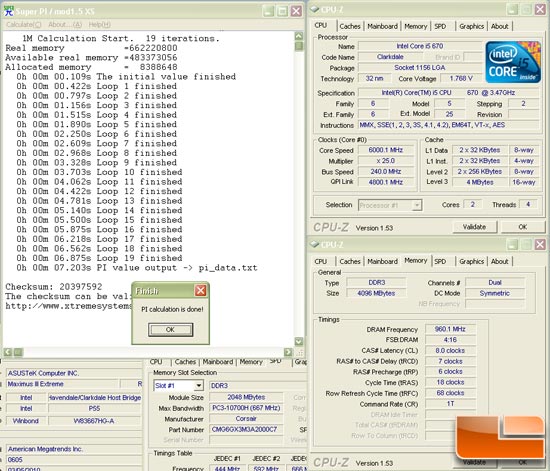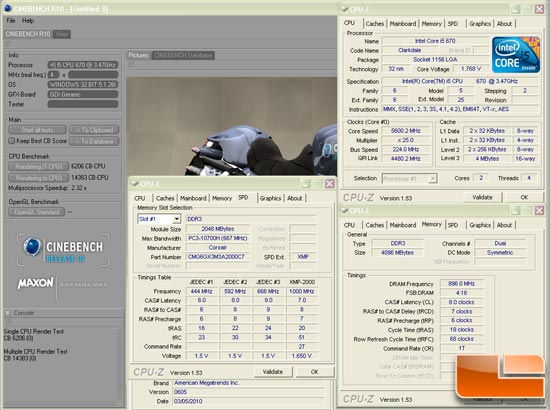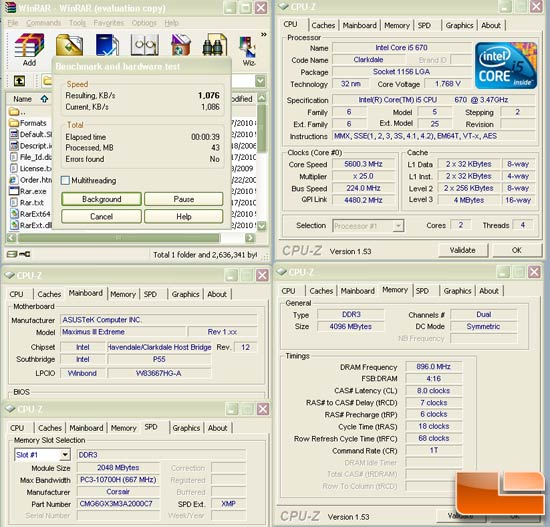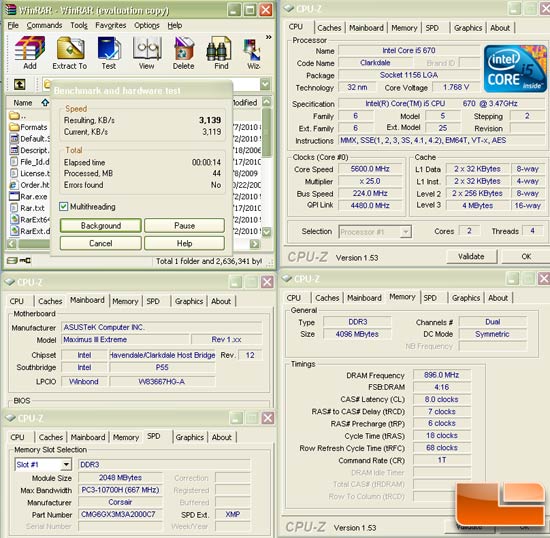ASUS Maximus III Extreme LGA 1156 Motherboard Review
Overclocking Results
Lucky for me and possibly lucky for you, I finally repaired my 2 stage cascade. This means I can once again achieve nice repeatable temperatures which yield repeatable frequencies and the like. So, in celebration of this I ran some of the benchmarks while at ~-95 Celsius on the CPU’s IHS and with the CPU speed in the middle to upper 5GHz range.
Who doesn’t love a little 6GHz Super Pi action? I was able to crank off a couple of faster runs at ~6075MHz but this was a nice screenshot with all the numbers lined up and such.
This was my safe “loop-able” Super Pi 32M speed. It took a bit of tweaking and the efficiency still isn’t up to par but it is a decent result. I can’t figure out the efficiency issues as the memory is cranked down so I’ve asked Asus if they can look into it. That being said, we see a ~50% performance increase with a 61% frequency increase.
Cinebench was smooth as silk at 5.6GHz. Compare this to 4.9k single-CPU and 11.1k SMP and scaling isn’t too shabby. Strangely enough, we aren’t seeing exactly a 1:1 frequency:performance scaling that you would expect. The frequency jumped 55% while the scores jumped 26.5% and 28.8%. This, however, could be due to the Windows XP install I used here versus the Windows 7 install I used in the review. Unfortunately, I fatally destroyed the Windows 7 install during the overclocking session and decided to swap over to a working drive.
WinRAR showed even less of a gain here with a 20% performance jump with a 55% frequency jump. Once again I blame this scaling on Windows XP versus Windows 7.
Quite the opposite was the WinRAR SMP. This, however, is a trend I noticed unique to Windows 7 x64. The WinRAR SMP performance is horrible in Win 7 x64 for some reason compared to Vista and Windows XP. An 88% performance increase was yielded with a 55% frequency increase; definitely the change of operating system made a bigger difference.
From all this we can draw a few conclusions. First, the board is way more than capable of achieving any overclock that is feasible on air cooling. When I say the board was smooth as silk it was silly smooth; you will not hear a single complaint from me regarding how easy it was to work with the board underneath the cascade. What few hiccups I had were due to my inexperience with Clarkdale CPUs. Second, ROG Connect with RC TweakIt is hands down the best platform out there for manipulating frequencies and voltages on a running system. Being able to configure the voltages and frequencies as the system was loading Windows or midway through the benchmark is fantastic. EVGA’s EVBOT and ELEET provide similar functionality but nothing beats the large, easy to use interface that is ROG Connect. Lastly, the board recovers from a failed overclock quite nicely. I can’t count on all my appendages how many times I had an overclock fail, but with a simple reboot I was back at it without ever having to manually reset the BIOS or fight with the board to reboot. This was a huge breath of fresh air compared to my EVGA X58 Classified which liked to occasionally play dead or balk at normally bootable settings.






Comments are closed.